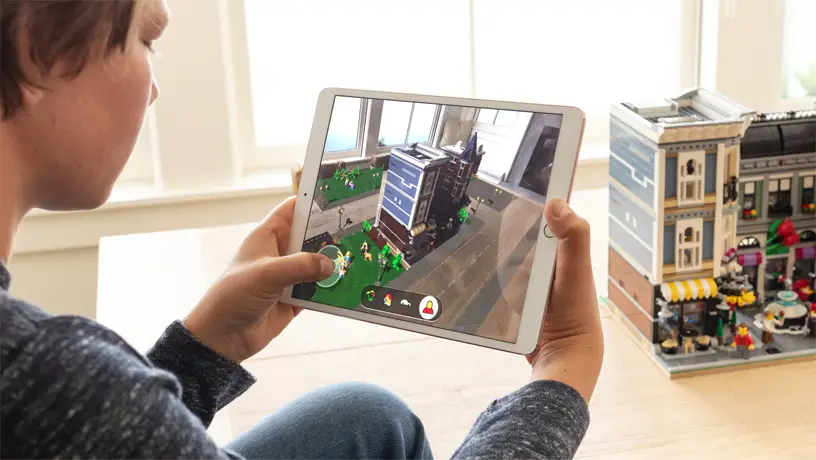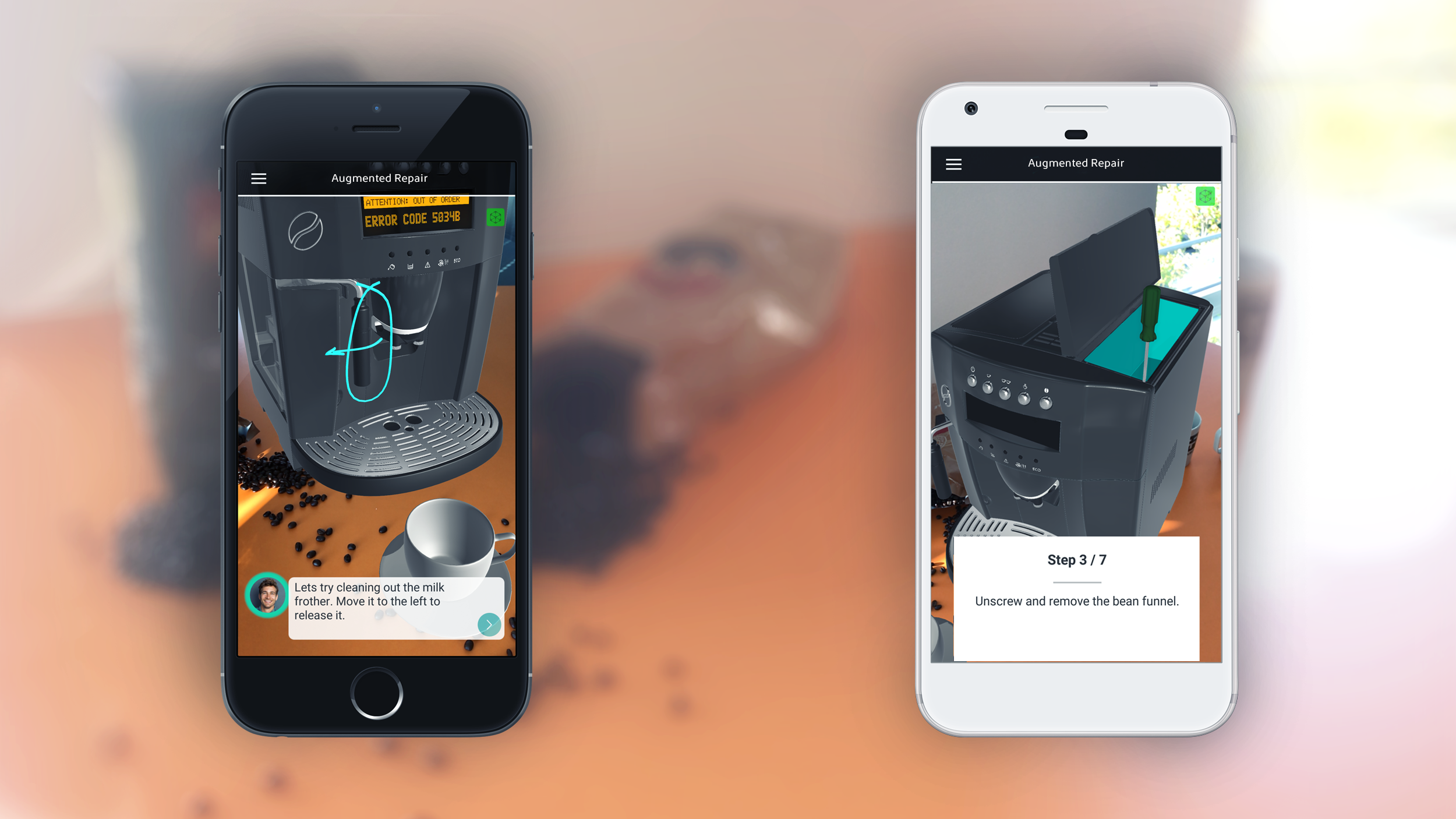Developing Augmented Reality Apps with ARKit and ARCore

Augmented Reality (AR) is a rapidly growing field that allows users to interact with digital content in the real world. With the introduction of AR development platforms like Apple’s ARKit and Google’s ARCore, creating AR apps has become more accessible than ever. This article will provide a detailed guide on how to develop augmented reality apps using ARKit and ARCore, covering the key concepts, tools, and best practices.

Prerequisites:

- Basic understanding of iOS or Android development
- Familiarity with 3D modeling and animation
- Access to ARKit or ARCore documentation and resources
Key Concepts:
- World Tracking: ARKit and ARCore enable apps to track and map the surrounding environment, allowing virtual objects to be placed accurately in the real world.
- Image Recognition: Apps can recognize and track images, providing an anchor point for placing digital content.
- Virtual Objects: 3D models, animations, and other digital assets can be integrated into the real world through AR.
- User Interaction: Users can interact with virtual objects using gestures, speech, or touch through the device’s camera.
Tools:
- ARKit and ARCore SDKs: Official development kits from Apple and Google that provide access to AR frameworks and APIs.
- 3D Modeling Software: Blender, Maya, Cinema 4D, etc. for creating virtual objects.
- Animation Tools: For creating animations and effects for virtual objects.
- AR Development Engines: Unity, Unreal Engine, etc. provide an integrated environment for AR app development.
Best Practices:
- Design for User Experience: Make sure the AR experience is natural, immersive, and engaging.
- Optimize Performance: AR apps can be computationally demanding, so optimize code and use efficient asset loading techniques.
- Use High-Quality Assets: Digital content should be visually appealing and optimized for mobile devices.
- Provide Contextual Information: Guide users with virtual cues or annotations to help them understand the AR experience.
- Ensure Accessibility: Consider users with disabilities by providing alternative input methods and visual aids.
Conclusion:
Developing AR apps with ARKit and ARCore empowers developers to create immersive and engaging experiences that bridge the gap between the digital and real worlds. By understanding the key concepts, leveraging the available tools, and adhering to best practices, developers can create innovative AR apps that enhance user experiences and unlock new possibilities.# Developing Augmented Reality Apps With ARKit and ARCore
Executive Summary
Augmented reality (AR) is taking the world by storm, allowing users to interact with digital elements in their real-world environment through their smartphone or computer. Two major platforms for contemporary AR app development are Apple’s ARKit and Google’s ARCore. This article offers a comprehensive guide for navigating app creation using these cutting-edge technologies.
Introduction
The integration of computer-generated enhancements within real-world experiences is what defines augmented reality. AR supplements our environment with pertinent digital information for an enhanced user experience. ARKit and ARCore facilitate the seamless incorporation of AR into apps, propelling us into a new era of innovation and possibility.
Core Subtopics
Planning and Design
- Identify the App’s Purpose: Define the app’s primary function and the target audience.
- Craft a User-Centric Interface: Consider user behaviors, intuitive designs, and accessible features.
- Design for Hardware Limitations: Account for device capabilities and the limitations of AR technology.
- Ensure Device Compatibility: Validate compatibility with the intended AR devices and operating systems.
- Prioritize Performance Optimization: Strive for seamless experiences with efficient code and optimized resource management.
Data Management
- Prepare 3D Models and Assets: Acquire or create high-quality 3D models and digital assets for your AR environment.
- Handle Persistence and Tracking: Implement persistent data storage and tracking solutions to maintain user progress and preserve experiences.
- Optimize for Real-Time Performance: Ensure real-time data processing and efficient information retrieval for instantaneous responses.
- Utilize Cloud Services: Consider cloud integration for data storage, scalability, and improved performance.
- Adhere to ARKit and ARCore Guidelines: Comply with platform-specific guidelines for data management and app behavior.
User Interaction
- Incorporate Natural User Interfaces: Provide intuitive gestures, voice commands, and touch controls for seamless user interactions.
- Enable Multi-User Experiences: Support simultaneous engagement for enhanced collaborative experiences.
- Provide Contextual Feedback: Offer visual and haptic cues to guide users and provide feedback for their actions.
- Leverage Spatial Awareness: Leverage device sensors for accurate spatial understanding and context-aware experiences.
- Design for Accessibility: Ensure app accessibility for users with various physical and cognitive abilities.
Development and Debugging
- Choose the Right Development Environment: Select an appropriate IDE and familiarize yourself with its features.
- Understand Framework-Specific Concepts: Grasp platform-specific frameworks, such as SceneKit for ARKit or Sceneform for ARCore.
- Implement Visual Effects and Animations: Integrate visual effects and animations to enhance user engagement and enrich AR experiences.
- Test on Multiple Devices: Thoroughly test on various devices to ensure compatibility and a consistent user experience.
- Monitor App Performance: Continuously monitor app performance and address any performance bottlenecks or bugs.
Marketing and Distribution
- Determine Target Market: Identify the intended user base for your AR app and tailor marketing efforts accordingly.
- Create High-Quality App Store Listings: Optimize app store listings with captivating descriptions, screenshots, and videos.
- Leverage Social Media and Influencer Marketing: Utilize social media platforms and collaborate with influencers to generate interest and promote your app.
- Drive Organic Discovery: Implement app store optimization techniques to improve visibility and organic search rankings.
- Monitor App Performance and User Feedback: Track key metrics, gather user feedback, and make data-driven decisions for continuous app improvement.
Conclusion
ARKit and ARCore have revolutionized AR app development, offering boundless possibilities. By mastering the concepts and techniques outlined in this guide, you can craft immersive and engaging AR experiences that empower users to interact with the world around them in extraordinary ways. Embark on this exciting journey, embrace innovation, and unlock the limitless potential of augmented reality.
Keyword Tags
- Augmented Reality (AR)
- ARKit
- ARCore
- App Development
- Mobile AR

Excellent post. I was checking constantly this blog and I am impressed!
Very useful information specially the last part :
) I care for such information a lot. I was seeking this particular information for a
long time. Thank you and best of luck.